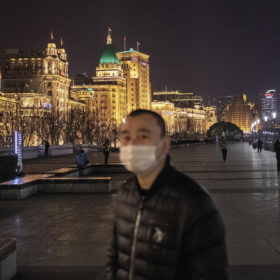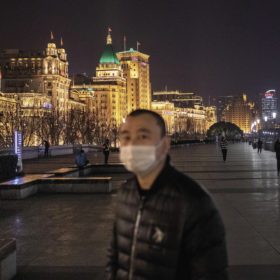The weekend read: 2020 – the first year for the PV sector to record a decline

In the wake of Covid-19, IHS Markit lowered its solar forecast from 142 GW to 104 GW. Compared to the 125 GW of solar capacity installed in 2019, the forecast would mean a turnaround from 13.6% annual growth to a 15% contraction. The IHS Markit forecast is based on Covid-19 being controlled and market restrictions being gradually lifted in the second and third quarters of the year.
From pv magazine 05/2020
In the wake of Covid-19, IHS Markit lowered its solar forecast from 142 GW to 104 GW. Compared to the 125 GW of solar capacity installed in 2019, the forecast would mean a turnaround from 13.6% annual growth to a 15% contraction. The IHS Markit forecast is based on Covid-19 being controlled and market restrictions being gradually lifted in the second and third quarters of the year.
Wood Mackenzie reached a similar conclusion. In a letter sent by its research team, WoodMac stated: “2020 solar installations have been revised down by 18% from pre-coronavirus levels from 129.5 GW to 106.4 GW. In the absence of prolonged recession or profound changes to financing and utility procurement, 2021 will recover to be 3% below pre-coronavirus expected levels. While the utility-scale impact will primarily see timelines shift, residential and C&I installations will struggle as customers come under significant economic pressure even past the lockdown.”
Calls for government support as the world quickly changes
The global Covid-19 pandemic has caused dramatic economic change around the world. The PV sector has been no exception, and as both host to the bulk of the world’s solar manufacturing and the biggest market for solar installations, China and its government are being called upon to support the industry as this fast-moving situation develops.
Only four months ago nobody expected the PV market situation to be anything like it is today. In fact, very few indeed could even imagine the world as we find it now. The current situation is reminiscent of the famous verse from Chinese rock star Cui Jian: “It’s not because I don’t understand, the world is just changing too quickly.”
Turning back to solar, some in China began 2020 feeling somewhat pessimistic about the previous year’s installation figures, as disappointing monthly installation figures were failing to turn around.
Where there was almost universal agreement – from market analysts to production managers and R&D scientists – was that PV’s future remains bright. All believed that even if China‘s domestic installations decreased unexpectedly year on year from 2018 to 2019, due to various extraordinary reasons (see pv magazine 04/2020), there would still be a substantial increase in 2020. The basis for this optimism was a realistic assessment of the facts: The cost of PV power has fallen to grid parity level in many markets, and has proven to be even more economic than traditional thermal energy sources. But the pandemic has undermined these widely held expectations.
Covid-19 impact
It was in January that Covid-19 first spread in Wuhan, a major city in central China. PV production throughout January was suppressed partially because of the traditional off-season, and also because most companies and individuals were preparing for the Chinese Lunar New Year holiday, which begins on January 24.
The outbreak intensified as the holiday commenced. Along with the subsequent continuous upgrading of pandemic prevention measures around the country, including restrictions on travel and on industrial logistics, the holidays then were substantially extended and a return to normal working conditions was postponed.
In fact, many employees did not start returning from their hometowns to factory locations until mid-February. Even then, many would still need another two weeks before returning to work due to quarantine restrictions. This caused many companies to restart production lines around the end of February. Even those factories with high levels of automation that managed to maintain continuous production during the holiday period had to gradually reduce production in late February to wait for inputs as inventories ran low. As a result, a large volume of productivity in China’s PV manufacturing segment was lost throughout February.
Then came the dawn light of production resumptions in March. However, considering that capacity utilization increased gradually, and given that additional time was required for materials and spare parts to arrive, “the common capacity utilization rate grew to around 80% at the end of March”, reported the China Photovoltaic Industry Association (CPIA).
As Covid-19 continued its global spread, major PV markets were gradually affected. By late March, Chinese manufacturers began receiving order suspensions and even cancellations from their overseas customers. To add insult to injury, existing orders became more and more difficult to ship due to increased constraints on international logistics. By mid-April, a large number of PV manufacturers began to reduce capacity utilization because of falling demand – and some even shuttered production, laying off workers.
Government savior?
For many years, the smooth operation of the global PV industry, from the manufacturing segment to installations, depended on the smooth transition between China’s domestic and overseas markets – sustaining demand levels in line with the pace of industry development.
Prior to 2012, the rapid development of the overseas market, primarily in Europe, supported the global solar industry. From 2013, when the European market’s rapid growth turned into a decline, China took up the baton and began to build up its own massive solar installation market. In many ways, these measures saved the modern industry.
Sweeping policy measures introduced in China in 2018 – widely known only by their date of implementation, 31/5 – were an important turning point. Limited by the generous and ultimately unaffordable subsidies in place, China’s government revised its solar support policy. This shift, if adopted wholesale, would likely have ended in disaster. Fortunately, other markets picked up the slack – on this occasion India, the Middle East, Japan, and Europe.As a result, the solar expansion story continued, until Covid-19 emerged.
Aside from two notifications of an industry-wide shutdown and industry-wide resumption, the Chinese government has released only guidelines for PV installations in 2020, based on which all PV projects can proceed with execution since the outbreak of Covid-19.
It is clear to many within the PV industry that this is far from sufficient. When overseas markets – representing 70% of total market volume – are facing a steep decline, China’s PV industry will lack the supportive policies needed. It will then most likely encounter another sharp downturn, similar to what was experienced in 2012.
Chinese PV industry insiders argue that the industry needs more extensive and detailed support from the central government. Such support must not come in the form of direct financial subsidies, but could be measures to enable market access, facilitate or expand grid connection, and provide backing for the trading of PV-generated electricity. Such measures, it is argued, could also contribute to the reform of China’s power system and the completion of committed renewable energy development goals.
But few indications of such measures have been seen thus far. On the contrary, there are negative signals arising, including ongoing subsidy payment arrears, local government commitments to purchase clean power undermined or outright canceled, and requests to postpone completion and grid-connection deadlines for tendered projects likely to be rejected. Given these signals, some within China’s PV industry have begun calling on the government to support the industry.
Future outlook
Forecasts for China‘s installations in 2020 have been revised down on the back of the pandemic. At time of writing, the latest figures from CPIA show that 35 to 40 GW can be expected. Some industry observers, like Wang Shujuan, are more pessimistic and suggest a figure of 26 to 35 GW. IHS Markit has expressed somewhat more confidence, saying that it predicts that 45 GW of solar will be installed.
A “black swan” is an unpredictable event that is beyond what is normally expected and has potentially severe consequences. Covid-19 may be the most significant black swan event in a generation. When will China‘s PV industry return to normal? This remains to be seen, but China continues to need solar PV, both for clean energy and ongoing exports.


